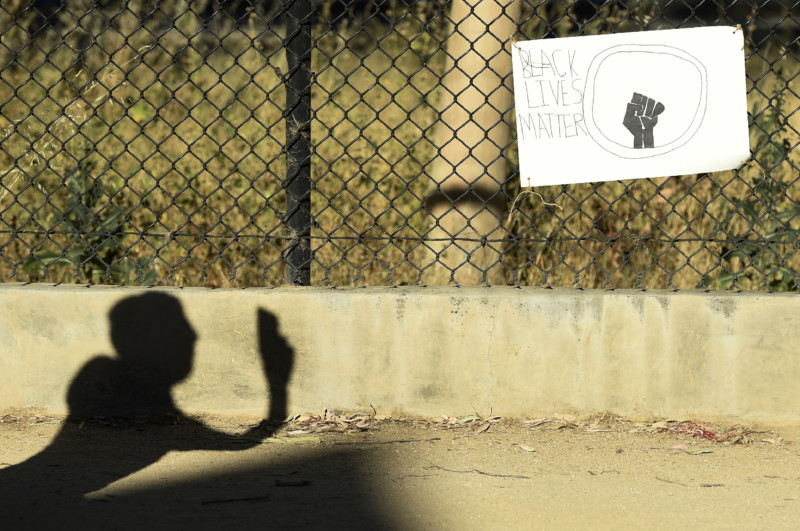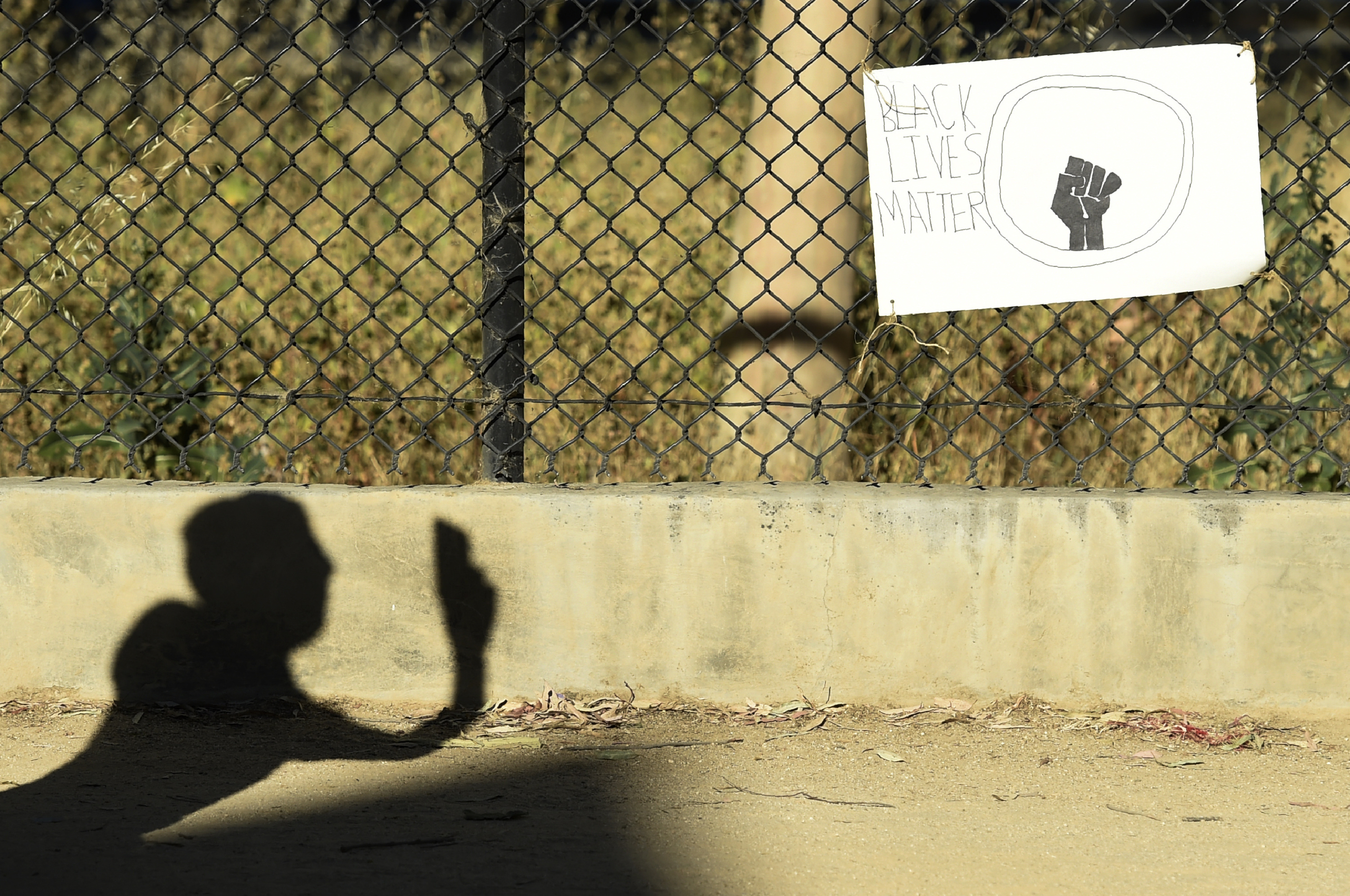The size and ubiquity of the Black Lives Matter protests that sprang up in the wake of George Floyd’s murder are unprecedented. Along with the demonstrations, we’ve gotten a new social media subgenre: protest aggregation. First, in May, there was @JusticeForGeorgeNYC, an Instagram account that quickly became a staple of life in New York; it’s a to-the-minute resource on street movements, a compendium of stirring imagery, and has nearly a quarter of a million followers. Soon after came @InThisTogether_LA, which started in Los Angeles on June 1; its follower count is now 127,000. The same day, in Connecticut, @JusticeForFloydCT got going. That account is up to nearly 10,000 followers. In New Jersey, @NJ4GeorgeFloyd has a little over 5,000 followers.
These and other accounts, many of them managed by teams of anonymous volunteers, require near-constant effort. Allie Cuerdo, who runs @JusticeForGeorgeLA, estimates she’s worked 6pm to 1am every day since starting the account. Protest information coming in through direct messages must be vetted to ensure that it’s accurate, safe, and adherent to the priorities of Black organizers. “Black Lives Matter is strictly abolitionist,” the proprietor of @NJ4GeorgeFloyd, an anonymous Egyptian Palestinian, said, referring to the goal of eliminating police departments. “We don’t post things surrounding reform.” The New Jersey account also connects demonstrators with resources such as safety marshals and street medics.

AP Photo/Chris Pizzello
Sometimes there are screwups. A major regret for @JusticeForFloydCT, overseen by a white-passing person of Latinx descent: posting about an event in Greenwich that turned out to feature only one Black speaker. At @JusticeForGeorgeLA, the mistakes are usually sins of omission—though the account did once, briefly, post about a nonexistent protest in Norwalk, in Los Angeles. (The rally was actually in Norwalk, Iowa.) Cuerdo, a thirty-year-old filmmaker, is willing to make her identity known. “I work primarily on documentaries and I’m Filipino American and I’m queer,” she said. “All of these parts of myself have informed, I would say, an activist sensibility.” A former student reporter, she’s been leaning back on old reportorial skills. For each protest about which @JusticeForGeorgeLA posts, Cuerdo or someone in her cohort attempts to speak directly to at least one, ideally two, organizers. “I see the New York Times do it; I see the LA Times do it. I should do it, too,” she said.
ICYMI: Dr. Danielle Kilgo on protests and legitimizing coverage
Many of these accounts are not run by Black people. Zevvy Smith-Danford, a graphic designer, runs @InThisTogether_LA with a small, mostly white, volunteer team of friends. @InThisTogether_LA, perhaps the largest protest-aggregator outside of New York, has had its growth boosted by reposts from celebrities like Timothée Chalamet and AnnaSophia Robb. “When a white celebrity shares it we’d get all these white followers,” Smith-Danford explains. “So I try to be clear through the stories: the people that run this account mean truly defunding the police and truly abolishing prisons.” @InThisTogether_LA also stands out for making use of a colorful palette, informed by Smith-Danford’s graphic-design experience, which includes work on pocket schedules for music festivals. “Things that look pretty get shared—that’s just what it is,” Smith-Danford said. “It’s gotten to a point where the organizations that are putting on protests, that have been putting in the work for years—they have a tenth of the followers that we do.” As the audience for protest-aggregators explodes, that gets complicated: “Everyone makes mistakes. And white allies make a lot of mistakes.”
“Amplification” is a word used often by non-Black protest-aggregators. “If we want to talk about implicit bias, and who should be running these accounts—for us, all we can say, is: we try and amplify Black and brown voices first,” Cuerdo explained. The account @JusticeForGeorgeNYC was started by a non-Black person and later, when it amassed a team, there was, at first, no one Black in the group. Speaking in early June to a Brooklyn outlet called Bedford + Bowery, Nupol Kiazolu, the president of Black Lives Matter of Greater New York, said: “I don’t wish them any ill. But I would like to say to them, if there’s no Black people on the team, then you should include Black people.”
Things have since changed. “We have white people, South Asian, Asian, Black—it’s a little bit less white than America,” a new @JusticeForGeorgeNYC contributor, who is Black, said. He chalked up the account’s early success to “a manifestation of Black people’s power on the internet.” He went on, “They saw what we were building and understood how to plug in to it.” The account tried to cultivate relationships with protesters. Have those efforts been successful? The new contributor laughed. “I actually wouldn’t celebrate ourselves too much,” he said. “This is where I have to separate myself from speaking for everybody on the @JusticeForGeorgeNYC team. You can’t trust that folks are trying to help Black people for too long.” If he were an organizer, he added, “I would be working with us, but watching us closely.”
That’s more than can be said of many mainstream media outlets covering the protests, according to @NJ4GeorgeFloyd. “Traditional media is avidly the enemy,” the account’s leader said. “The New York Times, MSNBC, Fox News—every single publication of record is the enemy. They mislead people, and that could ruin the movement. We work against traditional media. One hundred percent.”
ARCHIVES: When a journalist is arrested covering a protest, what should their news outlet do?
Amos Barshad is a journalist in London and the author of No One Man Should Have All That Power: How Rasputins Manipulate The World.

